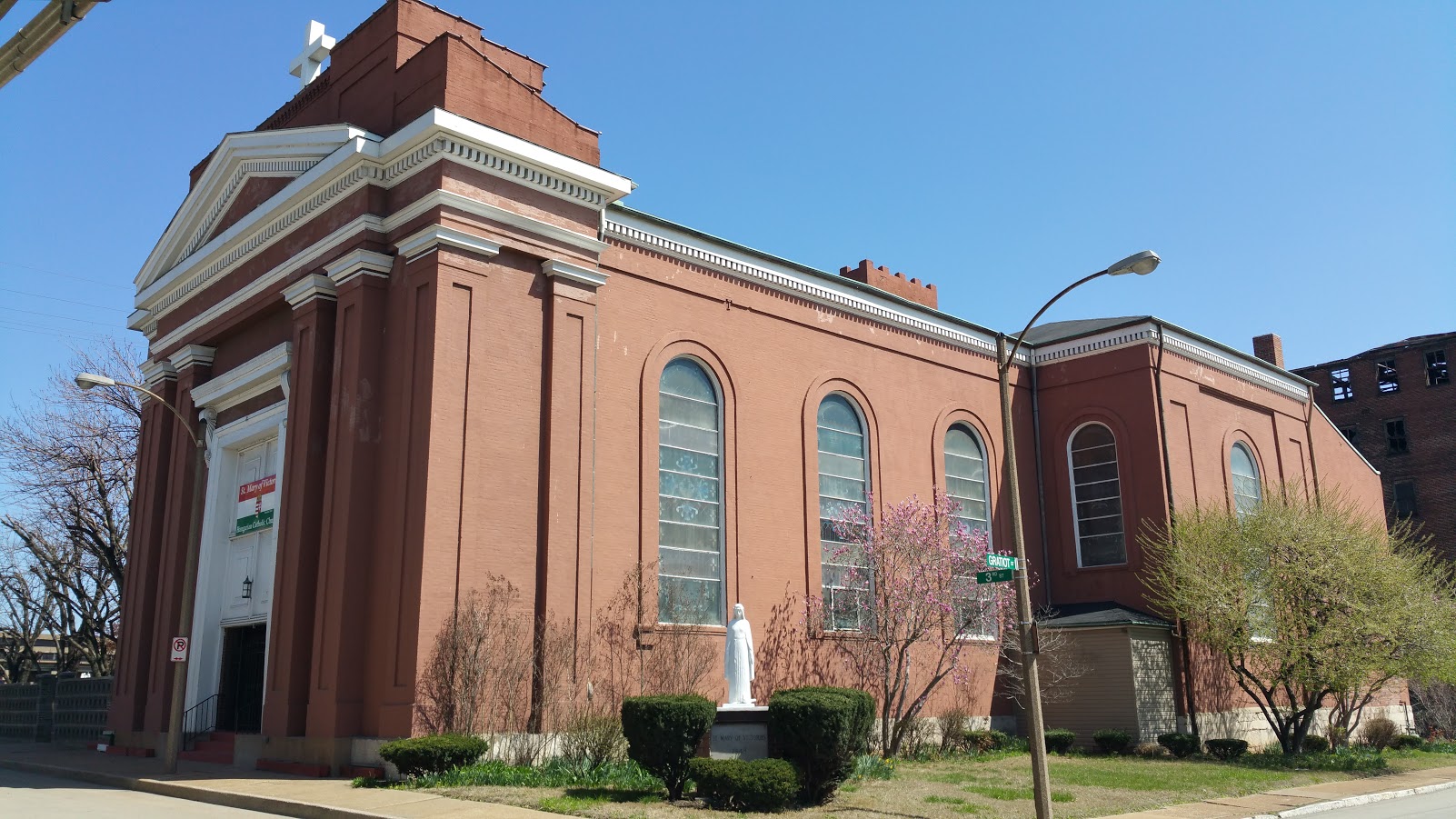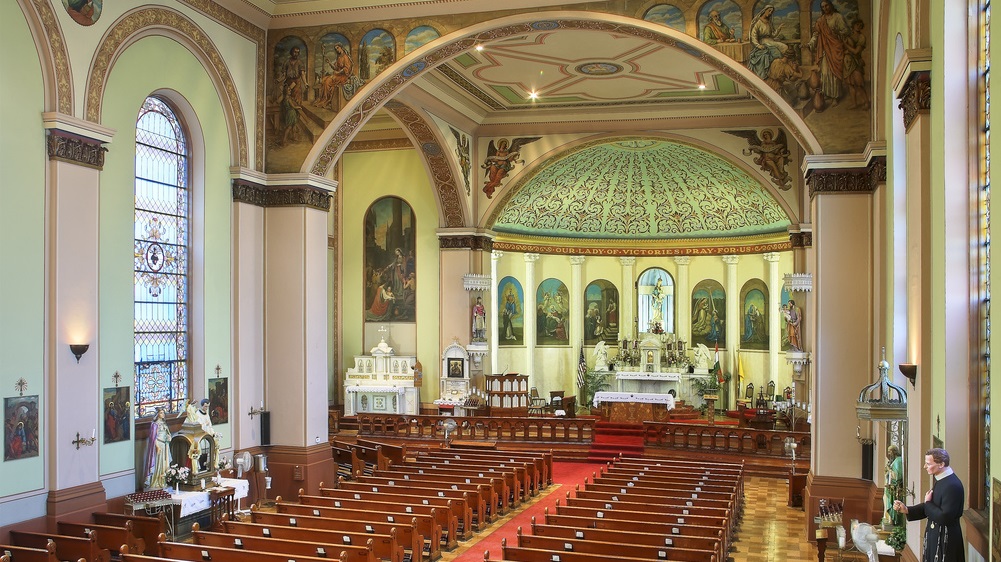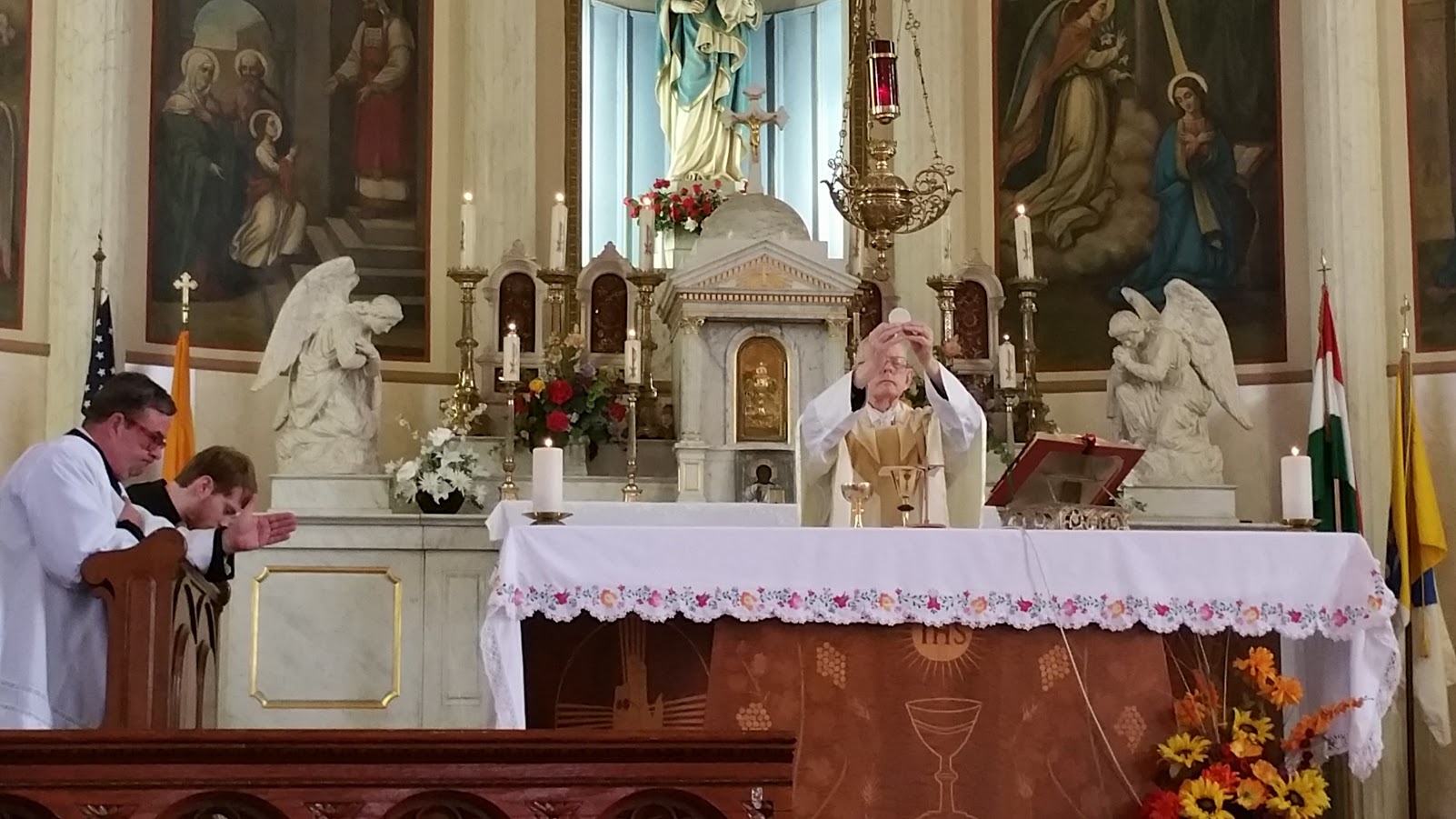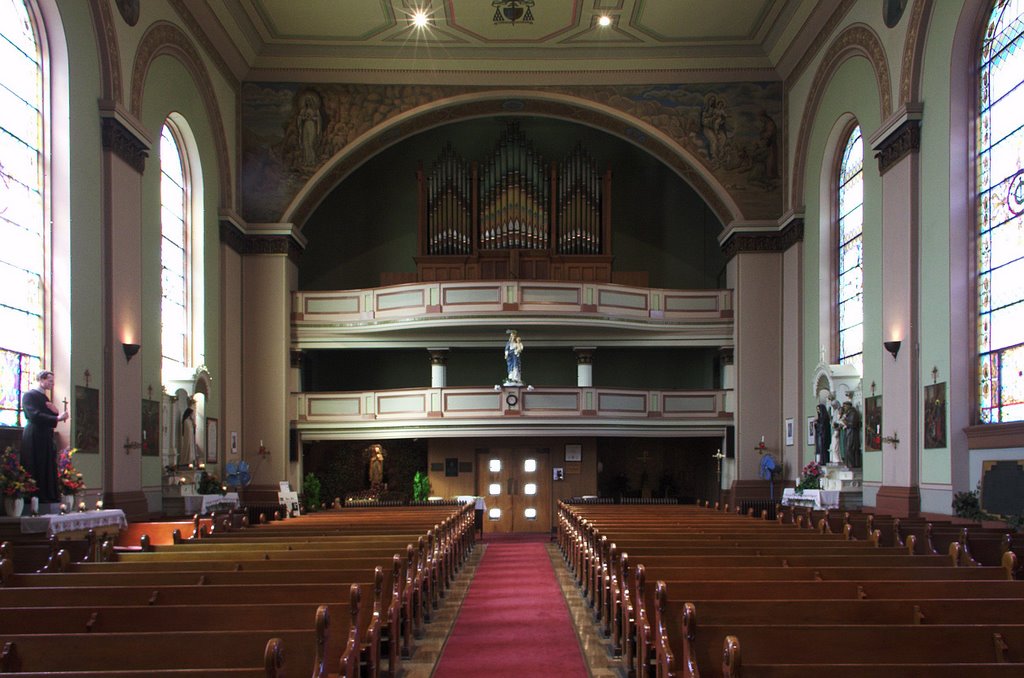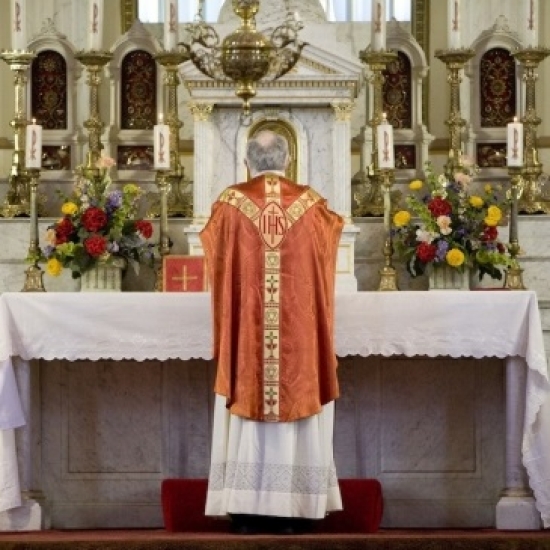25 August 2020, Solemnity of St Louis, King (Transferred to Sunday in the Archdiocese of St Louis)
St Louis King was a very popular saint in much of medieval Europe, especially in France, where his popularity remained strong even after the Revolution. Hence there are many proper Offices, and more than one set of Mass propers, to celebrate his feast day, which included an Octave until the 20c reforms. We are using the propers assigned in the current Graduale Romanum 1974 for the celebration of Holy Mass in the Ordinary Form.
Introit: In virtute tua . . . laetabitur rex
Gradual: Justus ut palma
Alleluia: Beatus vir qui suffert, with Mode II Melismatic Alleluia, PBC, p. 85.
Offertory: Veritas mea
Hymn: Gaude mater Ecclesia (Traditional Vespers hymn for St Louis)
Communion: Beatus servus + Psalm 71, Versus psalmorum pp. 199-200.
Recessional: From all Thy saints in warfare, p. 262, v. 1, 2, and 4, sung to tune Aurelia (tune found on page 303 of the VII hymnal)
Mass VIII, PBC p. 52. Credo III, PBC p. 77
The Introit has three phrases:
1. In virtute tua Domine laetabitur rex
2. et super salutare tuum exultabit vehementer
3. desiderium animae eius tribuisti ei.
In Your strength, Lord, the king will rejoice; and he will greatly over his salvation. You have given him the desire of his soul. V. For you have gone before him with blessings of sweetness; you placed on his head a crown of previous stone.
The text is based on verses of Ps 20. The melodic pattern is the straightforward Mode 7 scale with some elaboration. The high point is over laetabitur, as befits the joy the king experiences in drawing strength from the Lord. The king here represents a personification of the idealised righteous person, and in turn, of the idealised people Israel whose ultimate king is only God Himself. Our English word virtue comes from the Latin word virtus, which was a very important element of Roman civilization and culture. At least during the time of the Republic, one’s real strength came from the practice of virtue in one’s life. All of us, if we live lives of true virtue now, can find in that fidelity to God’s covenant a source of strength on the road toward that eternal salvation which is the fulfilment of our innermost desires. The intermediate cadence over Justus should be sung in such a way that makes it clear there is more to come. We end with a reminder that this fulfilment of our desires is God’s gift, given despite our shortcomings.
The Gradual has three phrases in the corpus and two in the verse:
-
Justus ut palma florebit:
-
sicut cedrus Libani
-
multiplicabitur in domo Domini.
V: -
Ad annuntiandum mane
-
misericordiam tuam et veritatem tuam per noctem.
The just shall flourish like the palm tree; he shall grow up like the cedar of Lebanon in the house of the Lord. To show forth Thy mercy in the morning, and Thy truth in the night.
As we have noted on other occasions, this Gradual gives its name to a melody type found in many Mode 2 Graduals, i.a., Angelis suis on the 1st Sunday of Lent and Requiem aeternam in the Mass for the Dead. We sing another one, Exaltabit cor meum, for the Immaculate Heart of Mary. Several scholars have done extensive analysis of the melodic structure; Dom Johner offers an overview of it in his commentary, which I posted in the notes for All Souls Day.
The Alleluia verse has two phrases:
-
Beátus vir, qui suffert tentatiónem:
-
quóniam cum probátus fúerit, accípiet corónam vitæ.
Blessed is the man that endures temptation; for when he hath been proved, he shall receive the crown of life.
The Mode 5 melody is, for the most part, formulaic, but forges close links between key words in the text: beautus, timet and mandatis ejus. We have a refrain from the book of Wisdom: the Lord has crowned the wise man with a life of glory! But it is a glory bestowed after passing the test of suffering. St Louis suffered a number of trials and torments in the course of his life, most notably during the Crusade that ultimately cost him his life.
The Offertory has two phrases:
-
Veritas mea et misericordia mea cum ipso
-
et in nomine meo exaltabitur cornu ejus
My truth and My mercy shall be with him: and in My name shall his horn be exalted.
This piece marks the only place in the Graduale where the Fa clef is on the fourth line. This would indicate that the melody has a strong tendency to descend. The first half of the first phrase with a range of but five note moves in intervals of seconds and thirds (repercussion); the second half has one interval of a third, with the other intervals seconds. Over the word ipso the melody modulates to a full step below the tonic —a turn much favored by the second mode. The second phrase has a range of an octave and comparatively large intervals; there are, however, fewer neumes on individual syllables than in the first phrase.
The melody over -cordia recurs over mea, and in an abbreviated form over ejus. The melody is solemn and well sustained, which is all the more fitting particularly when the word of God is quoted. The providence of God, portrayed by the triumphant ring of the melody with its major chord over nomine meo, is evident in the life of today’s Blessed.
Many older manuscripts assign this number to the feast of Pope St. Marcellus.
The most common traditional Vespers hymn for the feast of St Louis is Gaude Mater Ecclesia. The Latin text and melody are from the Solesmes propers supplement to the new Antiphonale Monasticum. The English translation is taken from the book, Blessed Louis, by a scholar at Dartmoth, Ceclia Gaposchkin, a friend whom Stan assists with Office manuscript transcriptions and interpolations from time to time. The translation, along with his own changes to more accurately reflect the Latin text, are used with her and her co-author’s kind permission. You will note the translation retains the meter of the Latin text, and also for the most part the rhyming scheme.
The Communion has two phrases:
-
Beatus servus quem cum venerit Dominus invenerit vigilantem
-
Amen dico vobis super omnia bona sua constituet eum.
Blessed is the servant, whom when the Lord shall come, He shall find watching: Amen I say to you, He shall set him over all his goods.
Based on the punch line of a parable in St Matthew’s Gospel (c. 24), there is a twist of word play in this text. The biblical text has dominus ejus (=his lord), while the liturgical text has Dominus (=the Lord). So the composer has added a level of interpretation to the parable, in line with the thrust of later chapters of this Gospel which devote much attention to a future coming in glory for judgement. (And in line with traditional patristic understanding of the passage.) He uses the word play on dominus/Dominus as lord/Lord to point out that the earthly lord is an image of the heavenly Lord whose coming in glory we await.
The simple but ethereal Mode 3 (transposed) melody reached its high point over venerit, which stresses the connection with the Lord’s coming in glory, which is the true destination of our lives and the ultimate purpose of celebrating the liturgy. We face East, from whence the Lord will come again. It descends to a low point over vigilantem, as if looking down toward the watching servant. It descends to a point of quiet calm, but to a cadence without resolution as the watching continues. A happy servant of God is one who is ever vigilant for this coming and dedicates all of life’s endeavours toward this end. As the melody again descends to a quiet point but without resolution, we are reminded that being watchful over the good things of the Lord does not have us reach a point of complacency. The vigilance continues until we reach the final goal of life with the Lord in heaven.
